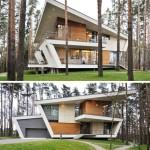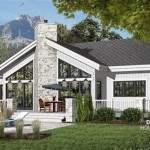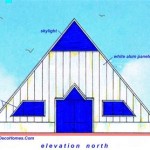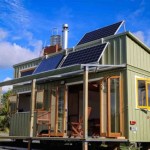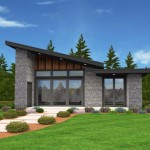Timber Frame House Plans: Building Your Dream Home
Timber frame construction, an age-old building technique, offers a unique blend of strength, beauty, and sustainability. The enduring appeal of timber frame homes lies in their exposed wooden framework, which creates a warm, inviting, and architecturally distinctive living space. For those considering embarking on the journey of building a timber frame home, meticulously planned and executed timber frame house plans are paramount.
The availability of timber frame house plans in PDF format offers convenience and accessibility. The ability to download and review plans digitally allows for detailed examination of the design, dimensions, and structural elements before committing to construction. While the concept of "free PDF" timber frame house plans might seem appealing, it's essential to understand the scope and limitations of such resources. This article explores the various aspects of timber frame house plans, including their benefits, considerations when selecting plans, and how to effectively utilize them in the construction process.
Understanding the Benefits of Timber Frame Construction
Timber frame construction provides several distinct advantages over conventional building methods. Firstly, the structural integrity of a timber frame is inherently robust. The large timbers, joined with mortise and tenon joints, create a stable and durable framework that can withstand significant loads and environmental stresses. This inherent strength often translates to open floor plans, as load-bearing walls are minimized.
Secondly, the aesthetic appeal of timber framing is undeniable. The exposed timbers add character and warmth to the interior space, creating a visually striking and inviting atmosphere. The natural beauty of the wood is showcased, providing a connection to nature and a sense of timeless elegance. This aesthetic appeal often increases the resale value of the home.
Thirdly, timber frame construction can be more sustainable than conventional methods. Wood is a renewable resource, especially when sourced from sustainably managed forests. Timber frames also allow for highly energy-efficient envelopes, as the spaces between the timbers can be insulated with a variety of eco-friendly materials. This contributes to a reduced carbon footprint and lower energy bills over the lifespan of the home.
Fourthly, the speed of enclosure can be faster than with traditional stick-frame construction. While the timber frame itself requires skilled craftsmanship and careful assembly, the walls and roof can be erected relatively quickly once the frame is in place. This can shorten the overall construction timeline, saving time and money.
Key Considerations When Selecting Timber Frame House Plans
Choosing the right timber frame house plans is a critical step in the building process. Several factors should be taken into consideration to ensure that the plans meet the homeowner's needs, budget, and local building codes. The perceived allure of “free PDF” plans should be carefully scrutinized.
Firstly, it's essential to define the desired size and layout of the home. The number of bedrooms, bathrooms, living areas, and other functional spaces should be carefully considered. The overall square footage of the home will directly impact the cost of materials and labor.
Secondly, the style and architectural design of the home should be considered. Timber frame homes can be designed in a variety of styles, ranging from traditional to contemporary. The design should reflect the homeowner's personal preferences and complement the surrounding environment. The architectural style also dictates the jointing methods used in the frame and the overall complexity of the build.
Thirdly, the complexity of the timber frame design should be assessed. More intricate designs with complex joinery and unconventional shapes will require more skilled labor and increase the cost of construction. Simpler designs are often more cost-effective and easier to build. Consider how the frame will interact with the overall design of the home, including the foundation, roof, and wall systems.
Fourthly, ensure the plans comply with local building codes and regulations. Building codes vary by location and address issues such as structural integrity, fire safety, and energy efficiency. It's crucial to have the plans reviewed by a qualified engineer or architect to ensure compliance. This is where "free" plans often fall short, as they may not be engineered for specific locations or load requirements.
Fifthly, evaluate the level of detail provided in the plans. Comprehensive plans should include detailed drawings of the timber frame, including dimensions, jointing details, and material specifications. They should also include information on the foundation, roof, and wall systems. The absence of crucial details, often present in free or low-cost plans, can lead to significant problems and added expenses during construction. Professional plans account for shrinkage and settling of the timber, which is often overlooked in amateur designs.
Sixthly, understand the limitations of free or low-cost PDF timber frame house plans. While these plans may provide a general idea of the design, they often lack the necessary level of detail and engineering to ensure a successful build. They may not be code-compliant or suitable for the specific site conditions. In most cases, it is prudent to invest in professionally engineered timber frame house plans to avoid costly mistakes and ensure the structural integrity of the home. These plans are often customizable and can be tailored to meet the individual needs of the homeowner.
Utilizing Timber Frame House Plans Effectively
Once suitable timber frame house plans have been selected, it's crucial to utilize them effectively throughout the construction process. Proper planning, communication, and attention to detail are essential for a successful outcome.
Firstly, thoroughly review the plans and understand all aspects of the design and construction process. Identify any potential challenges or areas of concern and address them proactively. This may involve consulting with a timber frame engineer, architect, or experienced builder.
Secondly, work closely with a qualified timber frame builder who has experience in constructing homes from plans. The builder should be able to interpret the plans accurately and execute the construction according to the specifications. A skilled timber framer understands the nuances of working with wood and can ensure that the frame is properly assembled and structurally sound.
Thirdly, establish a clear communication channel between the homeowner, architect, engineer, and builder. Regular meetings and site visits can help to ensure that everyone is on the same page and that any issues are addressed promptly. Open communication is crucial for preventing misunderstandings and ensuring that the project progresses smoothly.
Fourthly, obtain all necessary permits and approvals from local authorities before starting construction. This may involve submitting the plans for review and inspection. Failure to obtain the necessary permits can result in delays, fines, and even the suspension of construction.
Fifthly, carefully source high-quality timber from a reputable supplier. The type and grade of timber will have a significant impact on the structural integrity and aesthetic appeal of the home. Ensure that the timber is properly seasoned and treated to prevent rot and insect infestation.
Sixthly, pay close attention to the details of the timber frame joinery. The mortise and tenon joints should be precisely cut and fitted to ensure a strong and secure connection. The use of traditional joinery techniques, such as wooden pegs, can enhance the strength and aesthetic appeal of the frame.
Seventhly, protect the timber frame from the elements during construction. Cover the frame with tarps or other protective materials to prevent damage from rain, snow, and sun. Proper protection will help to preserve the integrity of the timber and prevent costly repairs.
Eighthly, properly insulate the spaces between the timbers to ensure energy efficiency. A variety of insulation materials can be used, including spray foam, rigid foam, and cellulose. Choose an insulation material that is appropriate for the climate and the design of the home. The thermal performance of the insulation system should be carefully considered to minimize energy consumption.
Ninthly, install the windows and doors according to the manufacturer's instructions. Proper installation is crucial for preventing drafts and water leaks. Seal all gaps and cracks around the windows and doors to ensure a tight building envelope.
Tenthly, maintain the timber frame properly over time. Regularly inspect the frame for signs of rot, insect infestation, or damage. Apply a protective coating to the timber to prevent weathering and discoloration. With proper maintenance, a timber frame home can last for generations.
Engaging qualified professionals is a critical component of the timber frame construction process. A timber frame engineer can review the plans and ensure that the frame is structurally sound and meets local building codes. An experienced timber frame builder can accurately interpret the plans and execute the construction according to the specifications. The investment in these professionals is often offset by the prevention of costly mistakes and the assurance of a high-quality, durable home.

Timber Frame Home Plans Designs By Hamill Creek Homes

Timber Frame Home Plans Designs By Hamill Creek Homes

Timber Frame Designs Floor Plans Timberbuilt

Mid Size Timber Frame Home Plans Hamill Creek

Floor Plans Vermont Frames

Mid Size Timber Frame Home Plans Hamill Creek

Dream Timber Frame Home Plans Vermont Timberframes

Large Timber Frame House Plans Hamill Creek

Large Timber Frame House Plans Hamill Creek

Timberstone 3 Bedroom Mountain Style House Plan 7788
Related Posts


